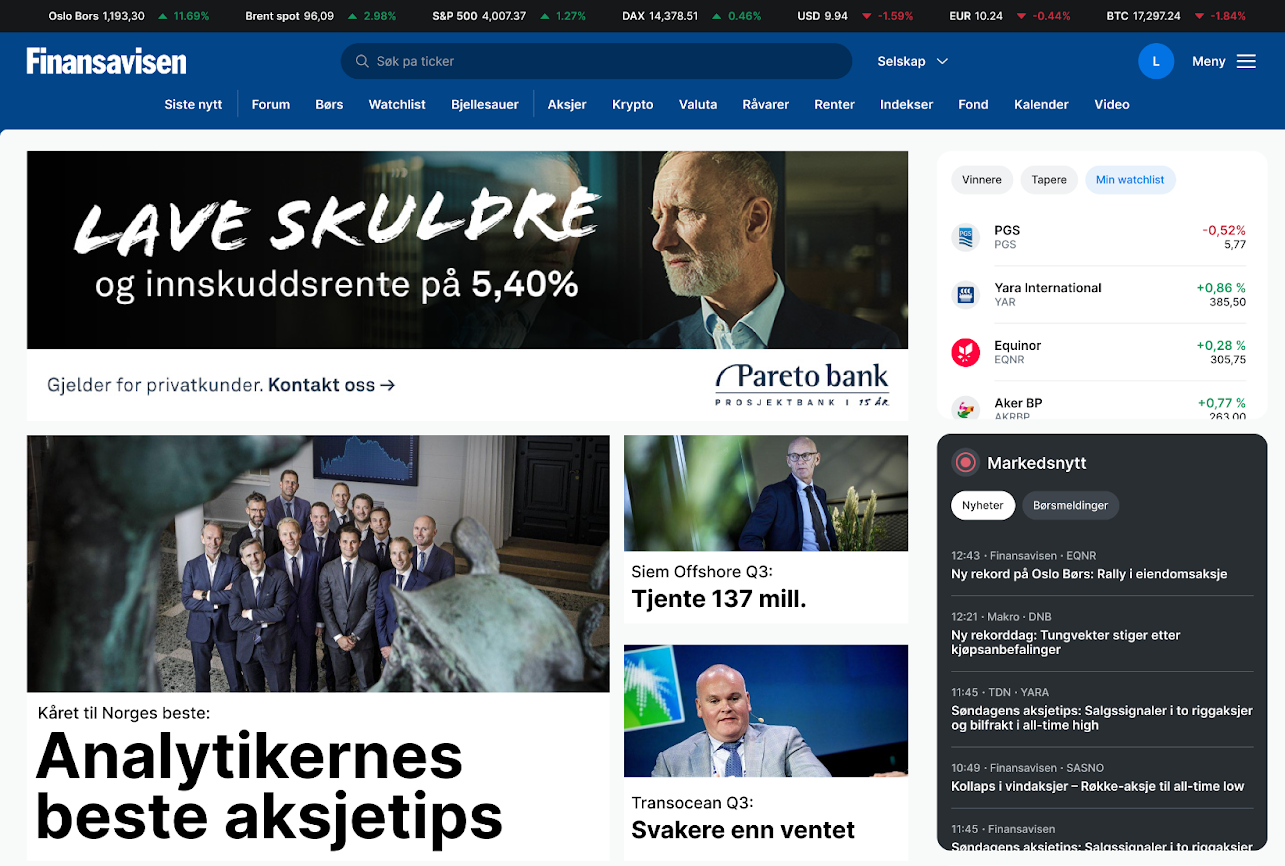
Newsletter
Newsletter
As platform traffic crumbles, publishers turn to apps and owned channels to rebuild audience ties.
31st July 2025
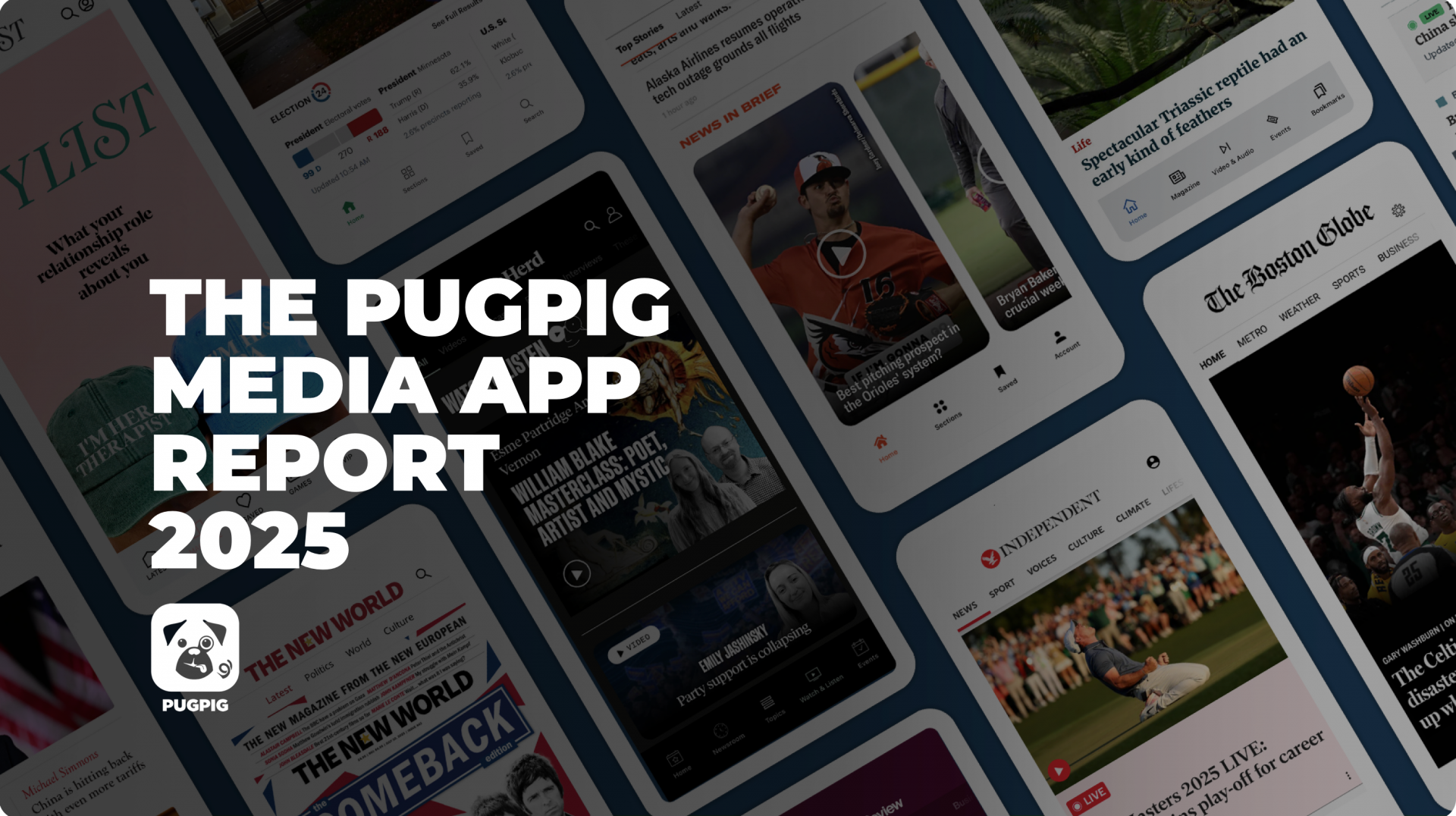
In this year’s Pugpig Media App Report, we’ve focused on delivering comprehensive benchmarks that span engagement, retention, features, story formats and user behaviour. Our goal is to equip publishers with meaningful insights to measure and compare their performance against industry peers.
The data in this report is drawn from our network of 140 publishers and over 400 apps. In it, we’re seeing a clear trend with publishers doubling down on their apps as social traffic continues to decline and search is increasingly under threat from generative AI and the looming prospect of Google Zero.
Alongside the benchmark data we’ve again surveyed a range of publishers to find out how they feel about the industry and their business right now, what challenges they’re facing, and where they’re focusing their efforts to build for the future.
We have found that:
One message was clear from publishers: They are leaning into apps because they deliver their most engaged audience, and as this becomes clearer, they are increasing their investment and focus on them.
In our 2024 edition of the report, the big news in the industry was the collapse of social media referrals. Traffic from Facebook to news publishers was 3x lower than the year before and off-platform revenue in the final quarter of 2023 dropped by a staggering 86%.
However, while search traffic held up surprisingly well, this year pretty much every publisher has seen sharp declines. Algorithm changes and the rollout of AI summaries made significant dents in publishers’ traffic. “Decline of organic search is impacting our top-of-funnel growth,” one publisher told us in our survey.
To address this, publishers are leaning into owned properties because in this environment, direct relationships with audiences become ever more important and apps are an important part of this strategy. “We feel there is a ticking clock on our reliance on those platforms. Our response to the app plays a big role in that,” Emily Withrow, Vice President of Product and Head of Subscriber Experiences, at the New York Times, told WAN-IFRA’s World News Congress.
While websites drive volume, apps drive engagement, especially with subscribers. “At the FT, over 70% of our subscriber traffic comes via the mobile app, which is huge and that’s massively grown over the last five years, especially post-COVID. It is the most engaged channel that we have,” Muj Ali, Group Product Manager – Acquisition, Retention, and Apps at The Financial Times, told the Publisher App Summit.
Publishers’ apps have different features that serve different audiences. Some are focused on digital-edition-led apps to engage their print audience. The rationale is two-fold: to provide a familiar experience to very loyal audiences and also to convert those audiences to digital products as the economics of print become more challenging.
We found that readers of edition-led apps use them in much the same way they use print, leafing through them, spending a significant amount of time reading and consuming a high number of screens – pages – per session.
In contrast, article-first apps have a wider range of digital mobile content, and audiences who use them often have shorter sessions, indicative of mobile snacking rather than edition browsing. Publishers are shifting to this mobile-first approach because the wider range of content from editions to puzzles, audio and video still delivers engagement but also attracts new audiences. On the face of it, edition-first apps have higher total time spent, but we know from our conversations with publishers that they tend to appeal to an established audience and are not an effective tool for growth.
While browsing editions and reading articles were the most common activities carried out by users, apps that included richer content formats showed significantly stronger engagement across all metrics: more sessions, longer time per session and more total minutes spent per user per month. Game-focused publications drove the highest frequency and longest session duration. The Stylist, for example, found that puzzle users read 31% more articles per session and 69% more articles per week.
We also found that audio usage has grown significantly across the apps in our dataset, with almost 50% of the apps now having some form of audio content. Increasingly we have seen audio being adopted as it reaches audiences at times and in places where text and video can’t, while they’re commuting, cooking or exercising, our report describes audio as the “ideal passive media format”.
Much of this increase in adoption has been powered by AI with text-to-speech services opening the door to high quality and affordable audio content that isn’t replicated in other platforms. In previous years we’ve always seen podcasts as the primary audio method, and whilst they still have an important role to play, they were almost-always delivered not just in the app but across many other platforms. However, article text-to-speech is predominantly only available on the publishers owned digital properties – their app and their website.
Moreover, through our research we identified a major opportunity to increase user engagement with these types of formats. A Pugpig customer since 2018, Foreign Affairs has increased its audio articles and added the ability to add all of its current audio articles to a playlist to drive a 72% year-over-year increase in audio listening and a doubling in the number of users listening, up to 20% of all app users.
Video is another feature that we’ve seen significant evolution in over the past 12 months with mobile-native vertical video proving much more effective in apps than horizontal. Driven by the rise of TikTok, the Reuters Institute found that 66% of audiences watch short-form video for news each week and publishers are following this trend. After adopting short-form vertical video, the BBC saw a 30% rise in the number of people accessing videos in the app and a 20% increase in the number of videos viewed.
In our report, we feature a case study from The Baltimore Banner. The US publication might only be three years old, but they’ve already won a Pulitzer Prize for their coverage of the opioid crisis and have leant heavily into social media as a way to engage new audiences. Using a social media lens, they’ve introduced vertical video into their own app, leveraging content that they were already producing for other platforms. The videos max out after 90 seconds and are seen as a way to bring the authenticity and connection of their social video creators to the app. Results so far are encouraging, with an average completion rate of 50% indicating that users are likely to complete shorter, snappier, pieces. Over the next year we expect to see adoption increase significantly.
Publishers have traditionally viewed their apps as tools to increase engagement with subscribers and therefore reduce churn. However, in our report we have detected signs indicating that app revenue opportunities are growing.
Since 2022 Apple has allowed for “reader apps” to direct users who are looking to subscribe outside of the app and onto the company’s website. However, significant friction was added to the user journey and this tended to have a large impact on conversion. Therefore, most publishers decided to stick with Apple’s slick app purchase flow. However, in a recent court ruling in the US, Apple has been banned from interfering with the journey in this way, meaning that some US publishers have chosen to take control of their entire purchase flow. It’s worth noting that Apple is appealing, but for the time being, it’s offering significant flexibility to publishers like Pugpig app, The Free Press.
However, as our report notes, there are tradeoffs. Apple’s purchase flow is highly optimised and whilst one of the primary benefits of external linking is that it allows for the publisher to own the relationship with the subscriber, most publishers allo w for in-app purchasers to link their subscription to their primary account, thereby enabling full access. This situation is likely to change more in the near future, as Apple’s appeal goes through the courts and other jurisdictions consider their approaches. In our report we list out the pros and cons of bypassing the app store and we would recommend that each publisher interested in the feature carefully consider their approach, ensuring that they have the tracking in place to measure the impact of any changes.
Data from Sensor Tower’s State of Mobile 2025 State of Mobile report shows a significant increase in in-app purchase revenue from non-gaming apps, growing by around 50% since 2020. Publishers are looking to their apps as ways to acquire new subscribers.
They are achieving this not just traditional in app subscriptions but with premium memberships and subscription tiers and also by using vouchers to allow audiences free, limited-time access to their subscription-based apps. Stylist has created a subscription tier, Stylist+, as well as a premium membership tier, VIP, with a special section in the app for these premium members.
“We’ve done some bespoke research which showed that our VIPs want to feel part of a community, … from IRL events where they can meet fellow VIPs, to a book club, to a virtual community area where they can interact with the Stylist team, which could potentially sit within the app,” Alun Williams, General Manager at The Stylist Group, said.
Download the full report now for additional details on how publishers are increasing the range of mobile-first content to engage new audiences and increase engagement, and find out publishers’ future app plans and priorities, including personalisation and AI features.
Here are some of the most important headlines about the business of news and publishing as well as strategies and tactics in product management, analytics and audience engagement.

Newsletter
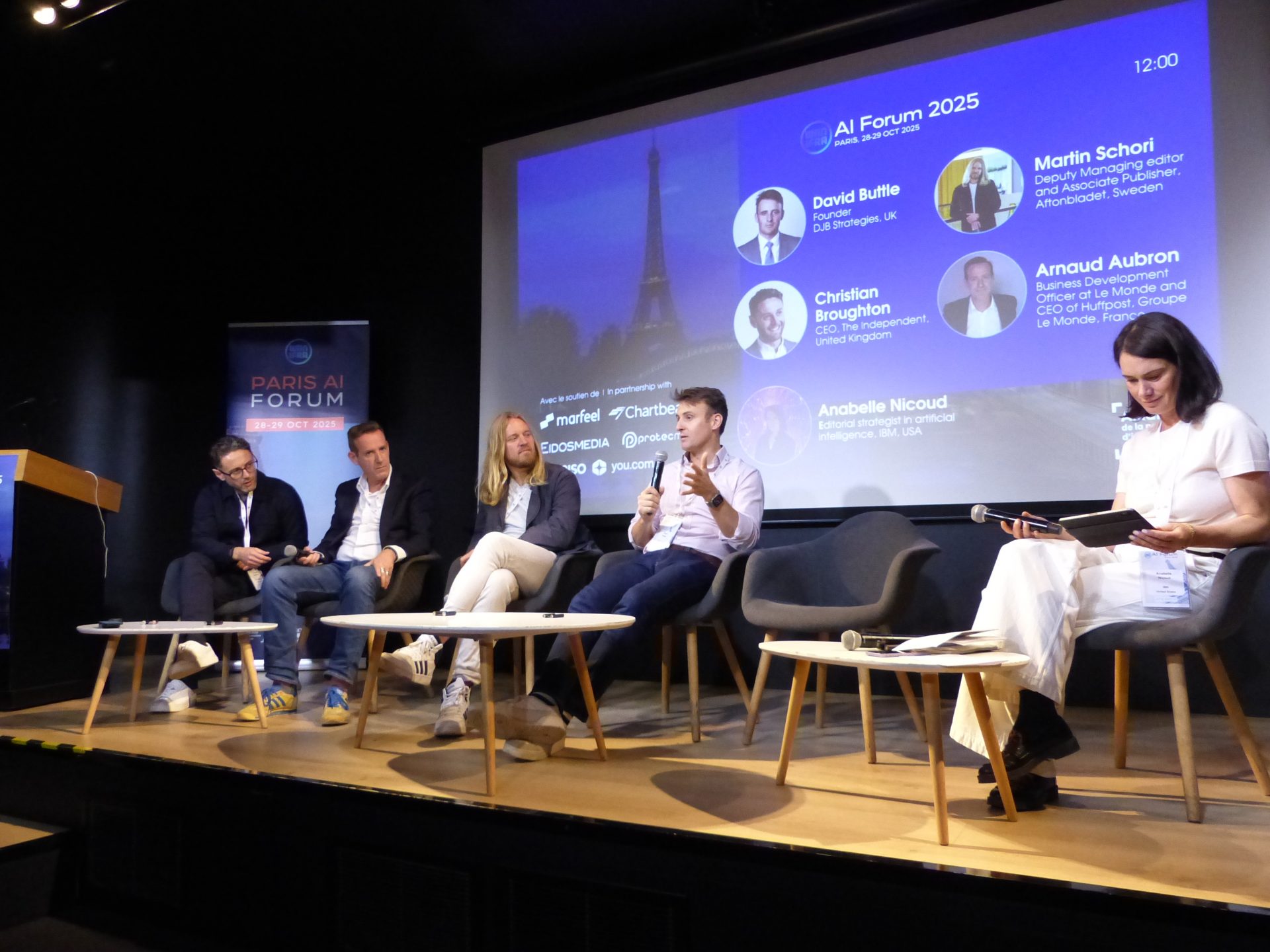
Newsletter

Newsletter
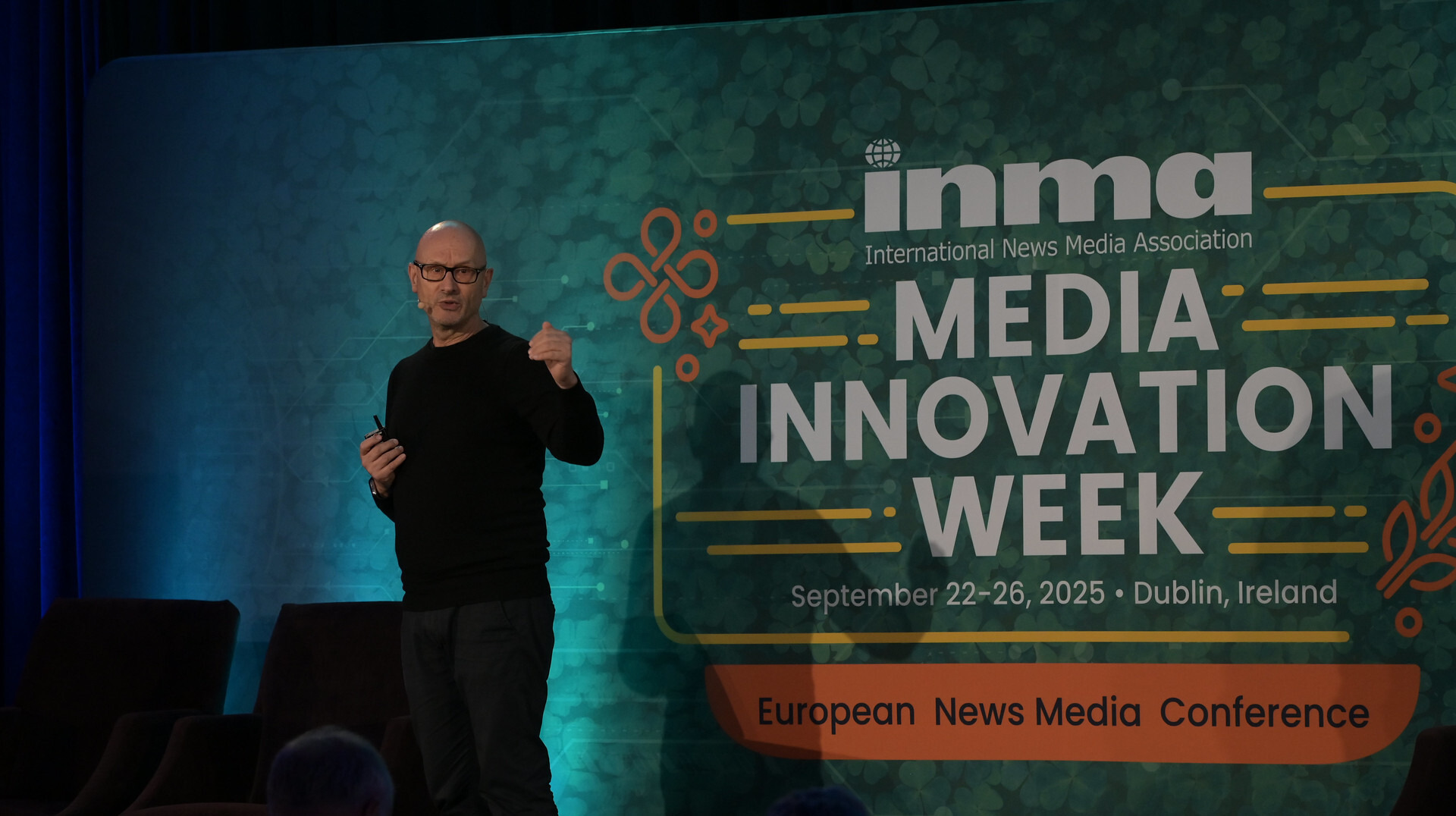
Newsletter
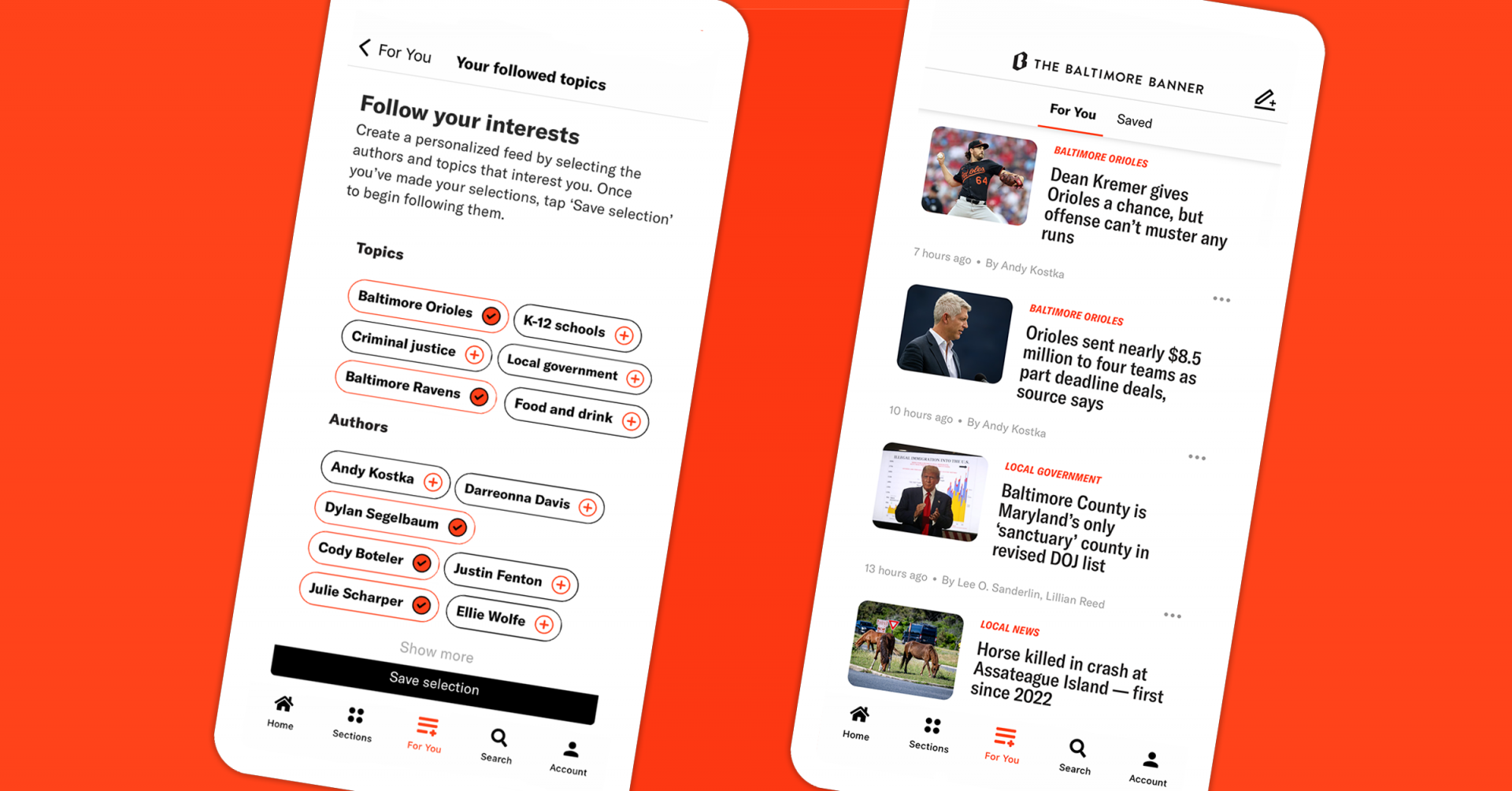
Newsletter